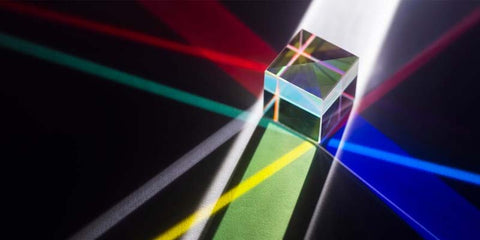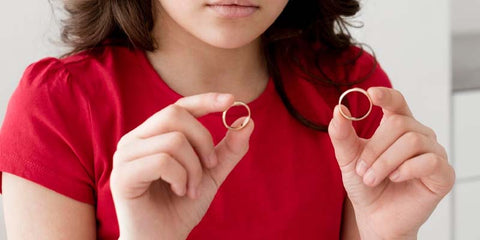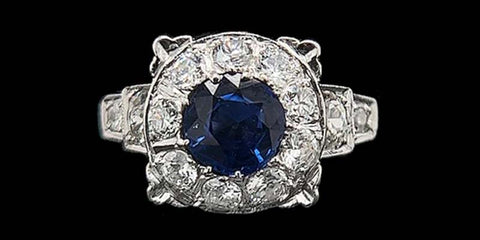A timeless symbol of luxury and elegance, diamonds have fascinated humankind for centuries. While traditional white diamonds continue to captivate, a hidden treasure within the diamond world is colored diamonds. From brilliant blues to dazzling yellows, colored diamonds offer a mesmerizing array of hues that elevate their beauty to new heights. Let’s explore the world of colored diamonds, look through their rarity and value, and uncover the allure of colored diamond jewelry.
Understanding Diamond Color and Clarity
Before we embark on our journey into the world of colored diamonds, it is essential to understand the importance of diamond color and clarity. When assessing a white diamond's quality, experts consider its absence of color and the presence of clarity. White diamonds are graded on a scale from D (colorless) to Z (light yellow or brown). The closer a diamond is to the colorless end of the spectrum, the higher its value.
Exploring the World of Colored Diamonds

Unlike their white counterparts, colored diamonds exhibit captivating hues that range from subtle to intense. These rare and unique gems are formed through a fascinating geological process, which results in the infusion of various trace elements during their formation. Each colored diamond showcases its distinct personality and charm, making it a highly sought-after gem.
The Spectrum of Diamond Colors
D Color Diamond
D color diamonds represent the pinnacle of color grades, being absolutely colorless and incredibly rare. They are the most sought-after and expensive due to their pure, icy appearance and the absence of any color, making them a premier choice for those seeking the ultimate in luxury.
F Color Diamond
F color diamonds are at the high end of the colorless range, displaying no color visible to the untrained eye. They offer a nearly identical appearance to D and E diamonds but at a slightly lower price point, making them an excellent choice for those prioritizing a colorless look without the highest price tag.
G Color Diamond
G color diamonds are near the top of the near-colorless range, offering a beautiful, almost colorless appearance that's hard to distinguish from truly colorless diamonds to the untrained eye. They provide excellent value, balancing high quality with a more attractive price than the top color grades.
H Color Diamond
H color diamonds are at the high end of the near-colorless grade, presenting a minimal tint that is difficult to detect unless compared side-by-side with diamonds of higher grades. They strike a balance between quality and cost, making them a popular choice for engagement rings and fine jewelry.
I Color Diamond
I color diamonds fall into the near-colorless category, showing a slight tint of color to a discerning eye, especially when compared to higher-color-grade diamonds. These diamonds can offer great value, as the color is generally not perceptible once set in jewelry, especially to non-experts.
J Color Diamond
J color diamonds are at the entry-level of the near-colorless range, showing a slight color visible when compared directly against higher graded diamonds. They offer considerable savings and can appear nearly colorless when set in the right jewelry setting, especially in yellow gold or rose gold, which can mask the color tint.
M Color Diamond
M color diamonds show noticeable color to the naked eye, falling into the faint color category. These diamonds offer a unique appeal with their warm tones at a much lower price point. They can be particularly appealing in vintage or antique-style settings, which complement their deeper color.
The Rarest Diamond Color

The rarest natural diamond color is red. Red diamonds are extraordinarily rare and highly sought after. They come in various shades, from faint to vivid, with the most intense shades being the most valuable. Their rarity and exceptional beauty make them some of the most expensive diamonds in the world.
Different Color Diamonds
Diamonds come in a spectrum of colors beyond the traditional white, including yellow, pink, blue, green, and more. These colors are graded differently from white diamonds, with the intensity of the color being a key factor in their value. Colored diamonds, also known as fancy color diamonds, can range from faint to vivid, with the more saturated colors being rare and valuable.
Colored Diamonds - Beyond the Rainbow
Beyond the conventional spectrum of diamond colors, exceptionally rare diamonds display unique colors such as violet, orange, and even black. These extraordinary diamonds offer a palette of colors that go beyond the typical rainbow, providing unique options for high-end jewelry and collectors seeking something truly one-of-a-kind. Each of these diamonds tells a story of rarity and beauty, appealing to those who seek the extraordinary in luxury.
Colored Diamonds - A Dazzling Choice for Engagement Rings
When it comes to an engagement ring, colored diamonds offer a unique and enchanting alternative to the traditional colorless solitaire. Their vibrant shades inject personality and individuality into the ring, creating a lasting symbol of love and commitment. Whether you opt for a striking blue diamond or a romantic pink diamond, colored diamond engagement rings are sure to make a memorable statement.
The Appeal of Colored Diamond Jewelry

While engagement rings may be the first thing that comes to mind, colored diamonds shine in other exquisite jewelry pieces. From dazzling necklaces to statement earrings, a colored diamond adds a touch of elegance and sophistication. Let's explore the world of colored diamond jewelry and discover how it can elevate any ensemble.
Diamond-Encrusted Beauty - Colored Diamond Necklaces
Colored diamond necklaces represent the pinnacle of luxury and sophistication. Encrusted with diamonds that span the spectrum of colors, these necklaces catch the light and eyes of admirers. From the subtle elegance of pastel hues to the boldness of deep, vivid colors, each piece tells a unique story. Designers often set these rare gems in intricate patterns, blending artistry with the natural beauty of the stones to create statement pieces that are both timeless and captivating.
Radiant Elegance - Colored Diamond Earrings
Colored diamond earrings exude radiant elegance, bringing a touch of color and sparkle close to the face. Whether in the form of classic studs, dramatic drops, or elegant chandeliers, these earrings enhance the wearer's features with their unique hues and brilliance. The diverse palette of colored diamonds allows for personal expression, with each shade symbolizing different qualities and emotions. These earrings are accessories and treasures that highlight the wearer's style and grace.
Captivating Wrist Adornments - Colored Diamond Bracelets
Colored diamond bracelets are captivating wrist adornments that combine the allure of precious gems with exquisite craftsmanship. From delicate bangles to opulent tennis bracelets, each piece is designed to showcase the unique beauty of colored diamonds. These bracelets can be worn as a subtle accent or a bold statement, making them versatile additions to any jewelry collection. The interplay of colors with the natural sparkle of diamonds creates a mesmerizing effect, turning every gesture into an exhibition of elegance.
Mesmerizing Glamour - Colored Diamond Engagement Rings

Colored diamond rings encapsulate mesmerizing glamor, offering a way to wear a piece of the extraordinary every day. These rings range from engagement rings that promise a lifetime of uniqueness to fashion pieces that add a pop of color and personality to any outfit. The depth and intensity of colored diamonds are showcased in various settings, highlighting their rare beauty. A colored diamond ring is not just a piece of jewelry; it's a statement of individuality and a testament to the timeless allure of diamonds.
IN CONCLUSION, natural colored diamonds offer a magical and enchanting world within the realm of diamond gemstones. Their vibrant hues and unique characteristics make them a rare and delightful choice for any jewelry lover. Whether you opt for a dazzling blue diamond engagement ring or a radiant pink diamond necklace, colored diamonds are a testament to the wonders of nature's artistry. Embrace the allure of colored diamonds and let these captivating gems add a touch of brilliance and individuality to your jewelry collection with Gesner Estate Jewelry. Gesner Estate Jewelry is renowned for its exceptional collection of vintage and antique jewelry.
Collectors and jewelry enthusiasts are drawn to Gesner Estate Jewelry for the opportunity to own a piece of history and for the chance to wear jewelry that stands out for its unique charm, character, and story. In a world where modern jewelry often leans towards mass production, our diamond pieces offer individuality, elegance, and a connection to the past that is rare and captivating.
Explore our exquisite collection of diamond jewelry and experience the magic of these rare and enchanting gemstones firsthand. Contact us today to discover the perfect diamond piece that will be treasured for a lifetime.
FAQ:
1. Are Colored Diamonds More Expensive?
Colored diamonds can be more expensive if the color is rare and highly saturated. The price of colored diamonds varies widely depending on the hue, saturation, rarity, and demand for the specific color. Some colored diamonds, like pinks, blues, and reds, are exceedingly rare and can fetch higher prices than even the highest quality colorless diamonds.
2. What Color Diamond is the Most Expensive?
The most expensive diamond color is typically red, due to its rarity and demand. Red diamonds are extremely rare, and when they do appear on the market, they command very high prices. Blue and pink diamonds also tend to be among the most expensive because of their beautiful hues and scarcity.
3. Are Colored Diamonds Really Diamonds?
Yes, colored diamonds are real diamonds, with the same chemical composition and crystal structure as colorless diamonds. The color in diamonds is the result of various impurities or structural anomalies within the crystal lattice. For example, yellow diamonds owe their hue to the presence of nitrogen, while blue diamonds contain boron.
4. Which Color Diamond is Best?
The "best" color diamond is subjective and depends on personal preference and the intended use. For traditional engagement rings, colorless (D-F) or near-colorless (G-J) diamonds are often preferred for their classic appearance. For those seeking unique or statement pieces, colored diamonds in hues like pink, blue, or yellow can offer distinctiveness and beauty. Ultimately, the best color is the one that most appeals to you or suits the wearer's taste.
5. Which Color Diamond is the Rarest?
Natural Red diamonds are considered the rarest of all diamond colors. Following red, blue and pink diamonds are also very rare. The rarity of these colors contributes significantly to their value and desirability. Intense natural yellow diamonds, known as canary diamonds, can be quite valuable.
6.What is the Cheapest Color Diamond?
The cheapest color diamonds are generally those with more common or less sought-after colors, such as brown or black. These diamonds, especially those with lighter saturations or less desirable tones, tend to be more affordable.
7.Do Colored Diamonds Fade?
Natural colored diamonds do not fade over time under normal conditions. Their color is stable and permanent, as it is an intrinsic part of the diamond's structure. However, exposure to extreme heat or certain treatments can potentially affect the color of some treated or enhanced colored diamonds. It is important to distinguish between naturally colored diamonds and those that have been treated to achieve their color, as the latter may have different care requirements.
To know more visit the site : https://gesner.com/blogs/list/colored-diamonds-unveiling-the-secrets-behind-their-brilliance
Check out our Other websites:
Art Deco wedding bands: https://gesner.com/collections/antique-vintage-wedding-rings-bands
Antique Engagement Ring: https://gesner.com/collections/antique-vintage-engagement-rings
Antique wedding bands: https://gesner.com/collections/antique-vintage-wedding-rings-bands